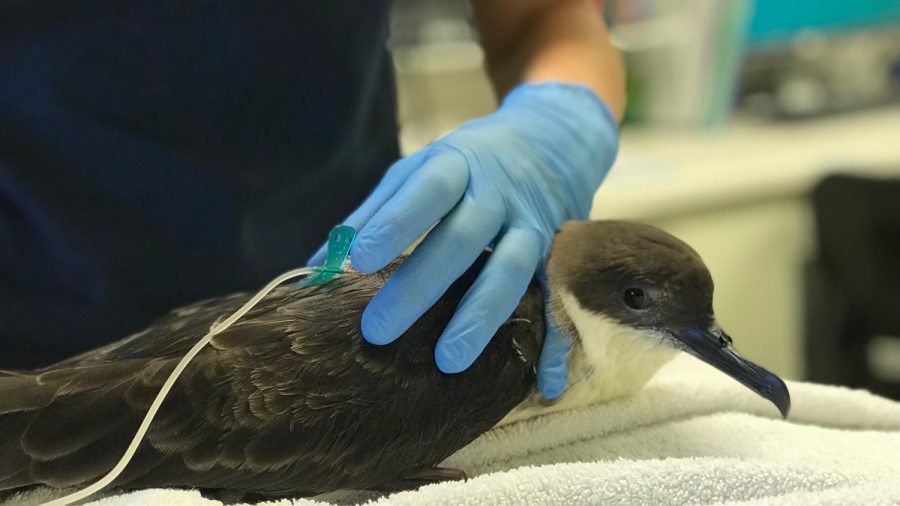A rarely seen seabird recently needed a lift to the animal hospital — so it hitched a ride on a cruise ship.
On July 16, a passenger aboard the Celebrity Equinox cruise ship made the startling discovery of a Greater Shearwater in need of urgent medical attention. The birds are seldom seen on land, so finding one taking refuge on a cruise liner was a sure sign of distress.

The ship was traveling from the Bahamas to Fort Lauderdale, Florida, and once it reached its destination, experts were waiting to take care of the bird.
“Apart from breeding — usually on a tiny uninhabited island chain in the middle of the Atlantic — [the birds] spend their lives over deep stretches of the Atlantic Ocean,” Dr. Renata Schneider, director of wildlife rehabilitation at the South Florida Wildlife Center, an affiliate of the Humane Society of the United States, told The Epoch Times.
“When we see Shearwaters at our hospital, they are in bad shape,” Schneider said.
This one was suffering from malnutrition and migration fatigue.

“The patient would only take a couple of steps and then sit. He was lethargic for sure,” Schneider said. “They usually don’t survive more than 24 hours after being found on shore.”
The Shearwater was first taken to the Miami Museum of Science before being transferred to the rescue for specialized care.
Beating the Odds
The medical team quickly devised a feeding and rehydration plan for the bird to gradually get it used to eating again.
“The body can suffer drastically if too much food is offered too quickly after a period of starvation,” Schneider said.
To the medical team’s surprise and delight, the bird survived the first 24 hours. It continued showing signs of strength and recovery, and doctors took the next step in readying it for release.

Seabirds need to keep their feathers waterproof, so the doctors quickly got the bird to swimming again to encourage it to preen its feathers after each swim.
“The first time that the Shearwater went into our specialized outdoor diving pool … it swam and flapped its wings and reminded me why I do what I do. It seemed so relieved to be on a large body of water,” Schneider said.
The Shearwater made great progress as the days turned to weeks. As its strength returned and lethargy subsided, it was a far cry from the helpless creature found aboard the ship.
Beautiful Release
After two weeks of care and observation, the bird’s vital signs were strong and doctors were confident it was ready for release. The excitement and anticipation were palpable.
“This is our first Shearwater release in five years!” Schneider said.
Rescuers at the South Florida Wildlife Center treat over 12,000 patients annually. Of those thousands of distressed animals, they’ve only seen 22 Shearwaters.
On July 31, a Florida Wildlife Center vessel released the Shearwater near the Fort Lauderdale Beach. The center’s mission is “protecting wildlife through rescue, rehabilitation, and education,” clearly, this was another success for them.

With so much diligent effort and meticulous care, seeing the Shearwater take off and disappear into the sky was a satisfying experience for those involved in the rescue.
“The release video blew my mind,” Schneider said. “I hope that others appreciate how beautiful it was to know that bird is exactly where it is meant to be — soaring above the ocean, on its way to join a colony.”
The Epoch Times reporter Michael Napoles contributed to this report.


